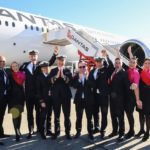New report outlining financial and economic case for UAM is drawn from larger study including analysis from 74 cities
The potential for Urban Air Mobility vehicles to transform short-haul air transportation was the subject of a new report unveiled at the National Business Aviation Association’s (NBAA) annual Business Aviation Convention & Exhibition (NBAA-BACE).
The report, titled Business Aviation Embraces Electric Flight, How Urban Air Mobility Creates Enterprise Value, outlines the financial and economic case for UAM and was a joint undertaking between NBAA and NEXA Advisors, LLC.
This report is a component of a larger study which was released in August 2019 – Urban Air Mobility (UAM) Economics and Global Markets 2020-2040 – which was a joint undertaking with NBAA, Aviation Week Network, and other respected industry groups.
Study includes analysis from 74 global cities
The study analysed 74 cities around the world, forecasting the financial and economic business case for UAM. The wider study also examined each city’s needs with regards to UAM, including infrastructure, regulation, GDP, congestion, current transportation networks and other factors to determine the ability of metro areas to capitalise on the potential of electric Vertical Takeoff and Landing vehicles (eVTOLs).
UAM is being proven in cities today, and is expected to become an increasingly important part of transportation systems in the next several years with the introduction of eVTOL aircraft. These new, battery-powered rotorcraft, will utilise an array of emerging advanced technologies and are expected to be quieter and safer than current helicopters.
Transforming short range air transportation
NBAA Senior Vice President of Strategy and Innovation Mike Nichols, CAM, co-author of both the study and the white paper said: “These reports highlight the potential of eVTOLs to transform short-range air transportation, especially for those companies and individuals that use business aviation.”
“These companies are expected to be among the first eVTOL users because these vehicles will solve the ‘last mile’ or ‘door-to-door’ challenge by moving people quickly from a company office, to meetings in city centres that are near to existing heliports or newly constructed vertiports, or to outlying airports so passengers can depart on a business aircraft or scheduled airline flight.”
Michael Dyment, NEXA Advisors’ Managing Partner and co-author added: “We have long known, and NEXA’s prior studies have proven, that business aviation creates significant enterprise value for many of the world’s top performing companies.”
“We now know that the addition of eVTOL aircraft to business aviation operators will further increase their productivity and mobility. This translates into a positive impact on long-term enterprise value.”

